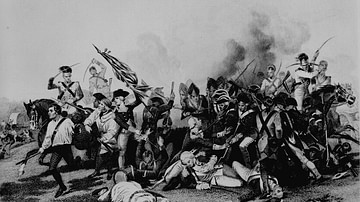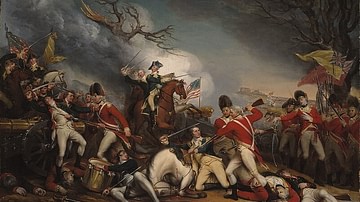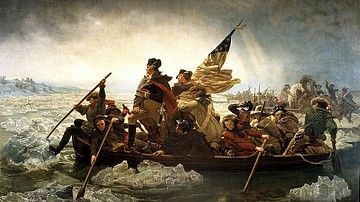Review

| Rating: | |
|---|---|
| Title: | Going Underground: Race, Space, and the Subterranean in the Nineteenth-Century United States |
| Author: | Lara Langer Cohen |
| Audience: | Professional |
| Difficulty: | Medium |
| Publisher: | Duke University Press Books |
| Published: | 2023 |
| Pages: | 288 |
Lara Langer Cohen explores the construction and usage of the concept of "underground" in the 19th-century United States. Cohen analyzes the racial connotations and hierarchy present in this construction through literature, speeches, and newspapers. In doing so, Cohen creates a fascinating book aimed at professional scholars that shines an important light on the building of an established concept.
The word “underground” conjures many ideas in our minds. Those of us skewed toward an understanding of 19th-century U.S. history inevitably think of the Underground Railroad. In Going Underground: Race, Space, and the Subterranean in the Nineteenth-Century United States, Lara Langer Cohen analyzes the concept of the underground through – as alluded to in the title of the work – race and space.
Cohen argues that the 19th-century connotations of the underground were racialized. When one thought of the underground, they inevitably thought of Blackness, both literally in terms of the spaces that white Americans visited and read about (such as Mammoth Cave) and their connections to Blackness (both in the case of the Black guides at Mammoth Cave, who’s Blackness became synonymous with the cave itself, and the Underground Railroad). The underground reveals itself through Cohen’s deft analysis as both a literal space, a metaphorical one, and, at times, both.
Across six largely chronological chapters, Cohen traces the idea of the underground in its various 19th-century forms. The first four chapters study the construction of the underground as a concept. Chapter One focuses on Mammoth Mountain and how the exhibit itself was racialized as Black due to the mental merging of the darkness of the cave, as well as the Blackness of the guides, among white visitors. Chapter Two sees Black writers invoking the language of the “underground” (e.g.: volcanos, mines, and caves) in an effort to describe the frustration of those at the bottom of the racial hierarchy and the eventual uprising of Black people. Chapter Three isolates the Underground Railroad itself and explores some of the most fantastic beliefs of the Railroad of the time – namely the belief among some that Black people and their allies had constructed an actual underground to ferry enslaved people to the North and to freedom. Chapter Four ends this section by looking at mid-19th-century literature that sought to explore secretive collectives and insurgent activities that U.S. citizens at the time were starting to speak about as “undergrounds” (19).
The final two chapters then focus on writings from individuals that viewed themselves as coming from this newly constructed social class. Chapter Five looks at Paschal Beverly Randolph, a teacher/political activist/occultist who, as Reconstruction began to fail, came to believe that the underground was a “portal to the cosmos” (21). Chapter Six turns to the International Working People’s Association, an anarchist organization that grasped the concept and language of the underground to explain their movement.
Cohen reinforces the importance of questioning seemingly established concepts. Throughout this work, Cohen provides eight illustrations and combines established – and often well-researched – sources, establishing the secret lives of these texts as they construct the racialized understanding of the underground that sticks with us to this day. The author also undertakes an interpretative methodology that she refers to as burrowing. This method involves Cohen “seeking out undergrounds in backgrounds, tropes, and allusions” (15). This book, thus, is aimed at professional scholars in U.S. history and literature. Everything has a history, and Cohen’s work reminds us that digging into the construction of the concepts – even those that seem to be settled – can unveil fascinating elements of the creation of our collective consciousness and language.
Laura Langer Cohen is Associate Professor of English at Swarthmore College. Cohen’s research and teaching focus on early American literature, especially 19th-century African American literature. Cohen is the author of The Fabrication of American Literature: Fraudulence and Antebellum Print Culture (2011) and also co-edited Early African American Print Culture (2012). For other works that investigate the formation of racial concepts and language, readers should see Jennifer Morgan’s Reckoning with Slavery: Gender, Kinship, and Capitalism in the Early Black Atlantic (2021).
About the Reviewer
Cite This Work
APA Style
Averette-Phillips, O. (2023, May 24). Going Underground: Race, Space, and the Subterranean in the Nineteenth-Century United States. World History Encyclopedia. Retrieved from https://www.worldhistory.org/review/356/going-underground-race-space-and-the-subterranean/
Chicago Style
Averette-Phillips, Omari. "Going Underground: Race, Space, and the Subterranean in the Nineteenth-Century United States." World History Encyclopedia. Last modified May 24, 2023. https://www.worldhistory.org/review/356/going-underground-race-space-and-the-subterranean/.
MLA Style
Averette-Phillips, Omari. "Going Underground: Race, Space, and the Subterranean in the Nineteenth-Century United States." World History Encyclopedia. World History Encyclopedia, 24 May 2023. Web. 18 Apr 2024.



